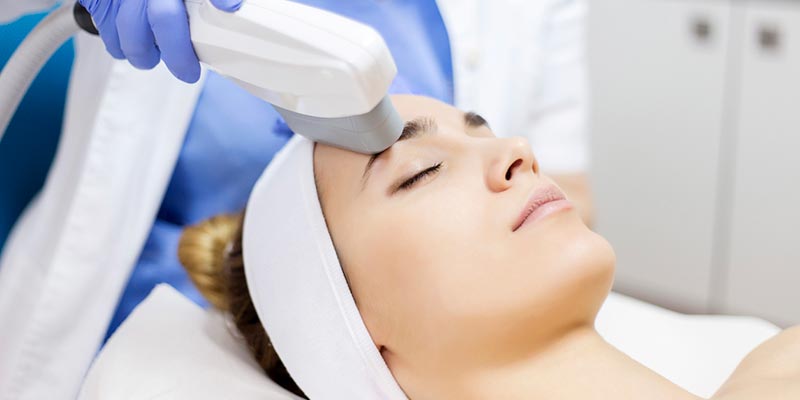The Latest on Rosacea Treatments
As we continue to learn more about rosacea, a common skin condition that affects millions of Americans, we can adjust current treatment methods to better manage its variety of symptoms. According to new research published in the British Journal of Dermatology, treating the specific symptoms of rosacea is more effective than taking a one-size-fits-all approach and using identical methods to treat everyone with certain types of rosacea. I believe in customizing skin care regimens for my rosacea patients depending on which subtype of rosacea they have.
Here is a brief overview of the four subtypes of rosacea, as well as the symptom-specific treatment methods outlined in this new research.
The Four Subtypes of Rosacea
The most common symptom of rosacea is its characteristic red flushing of the skin, but many people with this condition experience additional symptoms. Patients can have one or more of these subtypes simultaneously. The four basic subtypes of rosacea are:
- Subtype 1: Erythematotelangiectatic rosacea. This type usually presents with the characteristic skin redness, itching, stinging, and flushing. This type can lead to visible blue/ red blood vessels on the face and chest.
- Subtype 2: Papulopustular rosacea. This subtype suffers from painful pimple-like papules and pustules that resemble acne. They often occur on the midface, nose and cheeks.
- Subtype 3: Phymatous rosacea, also called rhinophyma. This subtype is characterized by thickened, bumpy skin and disfigurement of the shape and enlargement of the nose. WC Fields had this form of rosacea. Although there is a stigma that rhinophyma is caused by alcoholism, this is not true. Rosacea is the underlying cause. The stigma occurred because alcohol consumption is a trigger for rosacea but is certainly not the sole cause of rosacea.
- Subtype 4: Ocular rosacea. People with this type of rosacea experience dry, red irritated, swollen eyes and eyelids.
As you can see, rosacea can be much more than just a little redness in your cheeks. Rosacea is believed to be progressive, so getting on treatment as soon as the symptoms begin is recommended. (I have patients as young as 17!) It is best to treat each rosacea patient according to his or her unique symptoms, which may include more than one of these subtypes.
Symptom-Specific Treatment
Instead of treating rosacea by subtype, researchers suggest using the phenotypes, or specific observable symptoms, that each individual presents. The ROSacea COnsensus panel (ROSCO) developed a table of first-line treatments for various symptoms and severities of those symptoms. The panel noted that a combination of appropriate treatments may sometimes be the most effective approach if the first-line option doesn’t suffice or if multiple subtypes of rosacea occur at the same time.
For example, people with persistent redness may be treated using the newly approved Rhofade (Oxymetazoline) which prevents the blood vessels from dilating and causing facial flushing. Procedure options include intense pulsed light therapy (IPL) or the vascular 595nm laser (I prefer the V Beam by Syneron) as a first choice. Although the panel recommended that those with transient redness may better benefit from an oral medication, I practice medicine in Miami and the sun sensitivity seen with doxycycline makes this an unpopular choice. I usually combine VBeam laser and every am application of Rhofade as the best way to reduce facial redness in my patients.
All dermatologists emphasize the importance of general skincare guidelines for those with rosacea, such as diligently using a sunscreen of SPF 30 or higher, frequently using soothing moisturizers, gentle cleansers, and avoiding known triggers such as facial scrubs, alcohol and spicy food.
For those with eye-related symptoms, ophthalmologists in the ROSCO panel suggested a few key guidelines for proper eye care, including proper lid hygiene and wearing UV-coated sunglasses. While these habits may be enough to alleviate very mild symptoms, more severe cases may require oral or topical medications based on the patient’s specific phenotype.
In Summary
While ongoing research may uncover more information about what causes rosacea and how to best manage it, experts seem to agree that rosacea needs to be treated based on its unique set of symptoms. Rosacea treatments should begin as soon as symptoms occur to prevent progression and to relieve anxiety and depression that may be linked with rosacea.
The bottom line is that if you do have rosacea and are struggling to manage your symptoms or feel that your quality of life has suffered because of your condition, you may benefit from working with a physician who will take a more comprehensive approach to your treatment strategy.
Talk with your dermatologist to gain a better understanding of the skincare products that are recommended for rosacea patients. As the ROSCO panel pointed out, establishing the right skincare routine can have a significant impact on the look and feel of your skin. Find a physician to help you find a skincare routine to help with your rosacea.
Dr. Leslie Baumann, M.D. and her team at Baumann Cosmetic Dermatology believe in proof, not promises. World-recognized for both cosmetic and general dermatology, our treatment strategies rely exclusively on evidence-based, scientifically verified products and procedures that promote skin health and a natural appearance. We combine effective medical procedures with individualized instruction on proper skincare, nutrition, supplementation and lifestyle in order to maximize the health of the skin and body as a whole while minimizing the effects of aging. For more, visit Dr. Baumann’s blog for daily updates Monday through Friday, or inquire about an appointment through Derm.net.



